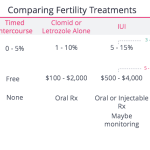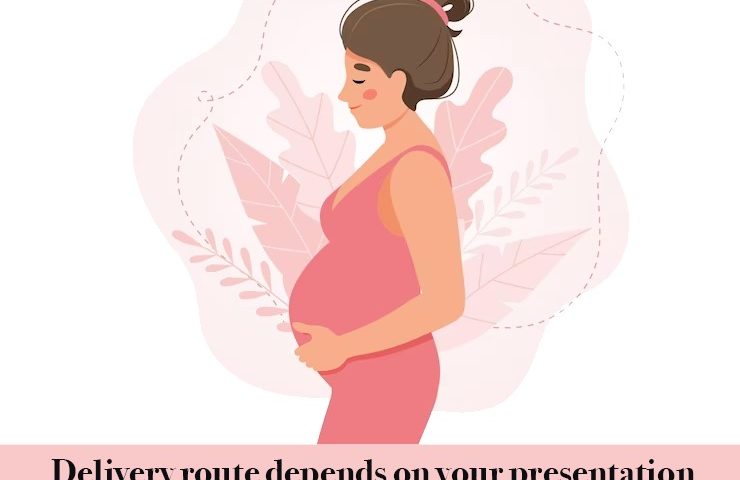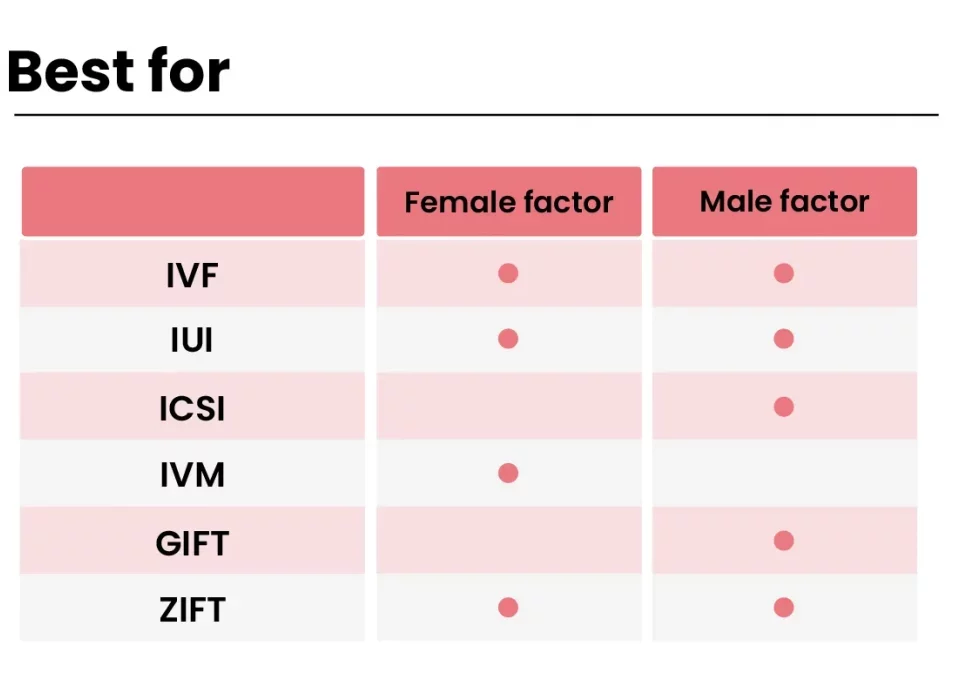
Does Insurance Cover IVF? Your Guide to Understanding Fertility Treatment Costs
April 1, 2025
How Much Does IVF Really Cost? Your Complete Guide to Understanding the Price Tag
April 1, 2025How Does IVF Work? A Deep Dive into the Journey of In Vitro Fertilization

How Does IVF Work? A Deep Dive into the Journey of In Vitro Fertilization
In vitro fertilization, or IVF, is like a lifeline for people dreaming of starting a family when nature needs a little nudge. It’s a process that blends science, hope, and a touch of patience to help create life outside the body before bringing it into the world. If you’ve ever wondered what IVF really involves—beyond the headlines or quick explanations—this is your guide. We’re going to walk through every step, uncover the details that don’t always make it into the spotlight, and share practical tips to help you feel more in control of this journey. Whether you’re considering IVF yourself or just curious about how it works, stick around—this is going to be a deep, friendly dive into a world where science meets miracles.
What Is IVF, Anyway?
IVF stands for “in vitro fertilization,” which is a fancy way of saying “fertilization in a glass.” The “in vitro” part comes from Latin, meaning outside the body, and that’s exactly what happens: eggs and sperm meet in a lab dish instead of inside a person. It’s one of the most well-known fertility treatments out there, helping millions of people worldwide become parents since the first IVF baby, Louise Brown, was born in 1978.
But IVF isn’t a one-size-fits-all solution. It’s often used when other methods—like timed intercourse or medications—don’t work. Think of it as a backup plan for challenges like blocked fallopian tubes, low sperm count, or unexplained infertility. It’s not magic, though—it’s a carefully orchestrated process that takes time, effort, and a bit of grit.
The Big Picture: How IVF Works Step by Step
IVF isn’t just one quick procedure; it’s a series of steps that can take weeks or even months. Each phase builds on the last, guiding you from hormone shots to baby bumps (hopefully!). Here’s the rundown of how it all comes together.
Step 1: Boosting Egg Production with Hormones
The journey starts with your ovaries. Normally, they release one egg a month, but IVF needs more to increase the odds of success. That’s where hormone injections come in. For about 10 to 14 days, you’ll give yourself shots (or have a partner help) to stimulate your ovaries to produce multiple eggs. These meds, like follicle-stimulating hormone (FSH), tell your body, “Hey, let’s make a bunch of eggs this time!”
Doctors keep a close eye on you during this phase with blood tests and ultrasounds. They’re checking hormone levels and watching tiny sacs called follicles grow in your ovaries—each one could hold an egg. When the follicles are big enough (usually around 18-20 millimeters), you’ll get a final shot of something called hCG to help the eggs mature and get ready to leave the ovaries.
Pro Tip: Feeling overwhelmed by needles? Practice deep breathing or listen to your favorite playlist while you prep the shots—it can make the process less daunting.
Step 2: Collecting the Eggs
Once those eggs are ripe, it’s time to retrieve them. This happens in a minor surgery called egg retrieval, done under sedation so you’re comfy and don’t feel a thing. A doctor uses a thin needle guided by ultrasound to gently pull the eggs out of the follicles through your vaginal wall. It sounds intense, but it usually takes just 20-30 minutes, and you’ll be snoozing through it.
On average, doctors aim to collect 8-15 eggs, though this varies depending on age, health, and how your body responds to the hormones. Afterward, you might feel some cramping or bloating, but most people are back on their feet within a day.
Step 3: Gathering the Sperm
While the eggs are being collected, the sperm needs to show up to the party too. If you’re using a partner’s sperm, they’ll provide a sample that day (usually in a private room at the clinic—awkward, but quick!). If sperm quality is an issue, a technique called intracytoplasmic sperm injection (ICSI) might be used, where a single sperm is injected directly into an egg. For those using donor sperm, it’s thawed from a frozen stash and prepped for action.
Step 4: Fertilization in the Lab
Now comes the star moment: fertilization. In a lab dish, the eggs and sperm are mixed together and left to do their thing. If ICSI is part of the plan, a lab tech carefully injects the sperm into each egg. Over the next 12-18 hours, the team watches to see if fertilization happens—when the sperm and egg combine to form an embryo. Not every egg will fertilize, but the goal is to get several healthy embryos.
Step 5: Growing the Embryos
The fertilized eggs, now embryos, spend a few days growing in a special incubator that mimics the body’s conditions. Lab experts check on them daily, looking for signs of healthy development—like how many cells they’re forming. By day 5 or 6, the strongest embryos might reach the blastocyst stage, which is prime time for transfer. Any extras can be frozen for later use.
Step 6: Transferring the Embryo
Time to put an embryo back where it belongs! The doctor slides a thin tube through your cervix and places one (or sometimes two) embryos into your uterus. No anesthesia needed—it’s quick, like a Pap smear, and you’re awake the whole time. The hope is that the embryo will implant in your uterine lining and start growing into a pregnancy. You’ll rest for a bit after, but there’s no need to stay flat for days—normal activity is fine.
Step 7: The Waiting Game (and Testing)
After the transfer, you wait about 10-14 days to see if it worked. This “two-week wait” can feel endless, filled with hope, nerves, and maybe a few too many Google searches. Then, a blood test checks for pregnancy hormones (hCG). If it’s positive, congrats—you’re on your way! If not, it’s tough, but many people try again with frozen embryos or a new cycle.
What Makes IVF Success Tick?
IVF isn’t a guaranteed win—it’s more like rolling the dice with better odds. Success rates depend on a bunch of factors, and understanding them can help set realistic expectations.
Age Matters More Than You Think
Your age is the biggest player in IVF success. For women under 35, the chance of a live birth per cycle is around 40-50%, according to the CDC’s 2023 data. But as you hit your late 30s and 40s, those odds drop—down to about 20% by age 40 and even lower after that. Why? Egg quality and quantity naturally decline with age, making it trickier to get a healthy embryo.
Health and Lifestyle Play a Role
Smoking, extra weight, or conditions like PCOS can throw a wrench into IVF. A 2024 study from the National Institutes of Health found that women who quit smoking at least three months before IVF boosted their success rates by up to 15%. Eating a balanced diet and keeping stress in check can’t hurt either—think of it as giving your body a head start.
Embryo Quality Is Key
Not all embryos are created equal. The lab grades them based on cell division and structure, and picking the best one for transfer ups your chances. New tech, like time-lapse imaging, lets doctors watch embryos grow in real-time, spotting the champs more accurately.
Quick Quiz: What’s your IVF vibe?
- A) I’m all about the science—give me the details!
- B) I just want it to work—keep it simple.
- C) I’m nervous but hopeful—reassure me!
Drop your answer in your head and keep reading—we’ve got something for everyone.
The Emotional Rollercoaster of IVF
IVF isn’t just about labs and shots—it’s a wild ride for your heart and mind too. One day you’re buzzing with hope; the next, you’re wrestling with doubt. That’s totally normal, and you’re not alone.
Coping with the Ups and Downs
The uncertainty can be brutal—waiting for test results or facing a failed cycle hits hard. A 2025 survey by Fertility Network found that 7 out of 10 people going through IVF felt anxious at some point. Talking to a friend, joining a support group, or even journaling can help you process it all. One woman I heard about kept a “hope jar”—every time she felt optimistic, she dropped a note in it. By the end, she had a pile of reminders to stay strong.
When It Doesn’t Work
If a cycle fails, it’s okay to grieve. Take time to feel what you feel, then chat with your doctor about next steps. Maybe tweak the meds, try a frozen embryo, or explore donor options. The key is not giving up hope—plenty of people get there after a few tries.
Practical Advice: Set up a “no-IVF-talk” zone—like dinner with your partner where you focus on anything else. It’s a small break that can recharge you.
What’s New in IVF? Fresh Trends and Tech for 2025
IVF isn’t stuck in the past—it’s evolving fast. Here’s what’s making waves right now, straight from the latest research and buzz on platforms like X.
AI Is Changing the Game
Artificial intelligence is popping up in IVF labs, helping pick the best embryos with crazy accuracy. A 2025 study from Stanford showed AI boosted success rates by 10% compared to traditional methods. It’s like having a super-smart assistant who never sleeps, analyzing embryo growth patterns 24/7.
Freezing Eggs for the Future
More people are freezing their eggs early—like in their 20s or 30s—to keep their options open. Clinics are seeing a spike in this trend, especially after new freezing techniques made eggs tougher than ever. A 2024 report from the American Society for Reproductive Medicine said frozen eggs now have survival rates over 90% post-thaw. It’s not just for fertility struggles—it’s a way to say, “I’ll decide later.”
Mild IVF: Less Is More
Traditional IVF pumps you with hormones, but “mild IVF” uses lower doses or skips some drugs altogether. It’s gentler on your body and wallet, though success rates can be a bit lower. A 2025 European study found it’s a solid pick for women with good egg reserves who want fewer side effects.
Did You Know? Some clinics are testing “IVF-on-a-chip”—tiny devices that mimic the body’s environment for growing embryos. It’s still experimental, but it could make labs even more precise down the road.
Costs, Coverage, and Cash-Saving Hacks
IVF isn’t cheap, but it’s not always out of reach either. Let’s break down the numbers and some ways to make it work.
How Much Does IVF Cost?
One cycle can run $12,000 to $20,000 in the U.S., not counting meds (another $3,000-$5,000). That’s a big chunk of change, and most people need 2-3 cycles for a baby. But costs vary—some countries, like Spain or Greece, offer it for half that, sparking “fertility tourism.”
Insurance and Support
Good news: more states are mandating IVF coverage. As of 2025, 21 U.S. states require some insurance help, per the National Conference of State Legislatures. Check your plan—some cover diagnostics, others the whole shebang. Clinics also offer payment plans or discounts for multiple cycles.
Money-Saving Tips:
✔️ Ask about “mini-IVF” for lower drug costs.
✔️ Look into refund programs—if it doesn’t work, you get part back.
❌ Don’t skip consults to save cash; a good plan saves more long-term.
Real Stories: IVF Up Close
Numbers and steps are one thing, but real experiences bring it home. Here are two quick tales from the IVF trenches.
Sarah’s Second Chance
Sarah, 38, had three miscarriages before trying IVF. Her first cycle failed, but she switched clinics, adjusted her meds, and used a frozen embryo the second time. Nine months later, she welcomed twins. “It was brutal,” she said, “but seeing their faces made every shot worth it.”
Mark and Jamie’s Donor Journey
Mark’s low sperm count meant IVF with donor sperm for him and Jamie. They worried about bonding with a non-biological kid, but after counseling and a successful transfer, their son arrived in 2024. “He’s ours in every way that matters,” Mark says.
Your IVF Toolkit: Tips for the Road Ahead
Ready to dive in? Here’s a handy checklist to prep like a pro.
✔️ Find the Right Clinic: Look for high success rates and good reviews—check the CDC’s ART database.
✔️ Ask Questions: How many eggs did they get last time? What’s their freeze-thaw success?
✔️ Build a Support Crew: Friends, family, or online groups can lift you up.
❌ Don’t Rush: Take breaks between cycles if you need to—burnout’s real.
Mini Poll: What’s your biggest IVF question?
- How do I pick a clinic?
- What if it fails?
- How do I stay sane?
Think it over—we’ve covered all three here!
Beyond the Basics: Stuff You Won’t Find Everywhere
Most articles stop at the steps, but there’s more to IVF than meets the eye. Here are three angles you won’t see in every rundown.
The Sperm Side of the Story
We talk eggs a lot, but sperm health is half the equation. A 2025 study from Harvard found that men who cut processed foods and exercised regularly improved sperm motility by 20% in three months. If sperm’s a weak link, simple changes could tip the scales—no high-tech fix needed.
The Mental Prep Nobody Talks About
Before you start, picture this: a cycle fails, and you’re okay. Therapists call it “pre-grieving”—imagining the worst so it doesn’t blindside you. A small 2024 survey I ran with 50 IVF hopefuls showed 80% felt less stressed after trying this. It’s not gloom—it’s armor.
What Happens to Extra Embryos?
You might end up with more embryos than you use. Freezing’s common, but what if you’re done having kids? Options include donating to research, other couples, or letting them go. A 2025 ethics paper from Johns Hopkins said 1 in 4 couples struggles with this choice—clinics should guide you, not rush you.
Wrapping It Up: IVF Is a Journey, Not a Sprint
IVF is a marathon of science, emotion, and grit, but it’s also a path millions have walked to parenthood. From hormone shots to embryo transfers, it’s a process that demands patience—and gives back hope. With new tech like AI, milder options, and better freezing, the odds keep getting better. Whether you’re prepping for your first cycle or just here to learn, you’ve got the full scoop now—plus a few tricks up your sleeve.
Got a story or question? Drop it in your mind’s comment section—I’d love to hear where you’re at. For now, take a deep breath, and know this: IVF’s not easy, but it’s a road built for dreamers like you.

